RMC Tokina 500mm F/8
Super telephoto prime lens • Film era • Discontinued
Abbreviations
| RMC | Multi-layer anti-reflection coating is applied to the surfaces of lens elements. This anti-reflection coating increases light transmission, eliminates flare and ghosting, and maintains color consistence among all lens models. |
Features highlight


Specification
| Production details: | |
| Announced: | 1978 |
| Production status: | ● Discontinued |
| Original name: | RMC Tokina 500mm 1:8 |
| System: | - |
| Optical design: | |
| Focal length: | 500mm |
| Speed: | F/8 |
| Maximum format: | 35mm full frame |
| Mount and Flange focal distance: | Canon FD [42mm] |
| Contax/Yashica [45.5mm] | |
| Fujica X [43.5mm] | |
| Konica AR [40.5mm] | |
| M42 [45.5mm] | |
| Minolta SR [43.5mm] | |
| Nikon F [46.5mm] | |
| Olympus OM [46mm] | |
| Pentax K [45.5mm] | |
| Diagonal angle of view: | 5° |
| Lens construction: | 7 elements in 2 groups |
| Internal focusing (IF) | |
| On Nikon D APS-C [1.53x] cameras: | |
| 35mm equivalent focal length: | 765mm (in terms of field of view) |
| 35mm equivalent speed: | F/12.2 (in terms of depth of field) |
| Diagonal angle of view: | 3.2° |
| On Pentax K APS-C [1.53x] cameras: | |
| 35mm equivalent focal length: | 765mm (in terms of field of view) |
| 35mm equivalent speed: | F/12.2 (in terms of depth of field) |
| Diagonal angle of view: | 3.2° |
| Diaphragm mechanism: | |
| Diaphragm type: | Fixed |
| Aperture control: | None |
| Focusing: | |
| Closest focusing distance: | 1.5m |
| Magnification ratio: | 1:2.5 at the closest focusing distance |
| Focusing modes: | Manual focus only |
| Manual focus control: | Focusing ring |
| Physical characteristics: | |
| Weight: | 462g (M42) |
| Maximum diameter x Length: | ⌀78×88.2mm (M42) |
| Accessories: | |
| Filters: | Removable front filters are not accepted |
| Rear screw-type 35.5mm | |
| Lens hood: | Screw-type round |
| Teleconverters: | <No data> |
| Source of data: | |
| Manufacturer's technical data. | |
Manufacturer description #1
No other lens packs so much power in a small package-weighing 485g (17oz) and only 87.2mm (3.5") long! Close-up photography is easily achieved at a distance of 1.5m (4.92'). Ultra sharp optics make this lens a "must" for any long distance.
Manufacturer description #2
The Tokina TM500 incorporates two mirror elements as a part of the entire optical composition plus it is the worlds most lightweight and compact 500mm-lens presently available.
Not only has the chromatic aberration been reduced to an invisible minimum but also the overall definition and resolution has been marginally improved. Even in Infrared Photography there is no need for any focusing compensation.
The most compact and most lightweight 500mm-lens available today
The overall diameter of this lens is only 78mm, and the overall length (from P-Mount to Barrel-Fringe) is only 88.2mm. And its weight of only 462 gram makes this precision lens the most compact and lightweight presently available.
Continuous Focusing
From the minimum focusing distance of 1.5m to infinity this lens is operated with continuous focusing, using a Helicoid Screw. The maximum magnification ratio at 1.5m is M=1:2.5.
Fixed Aperture
The preset aperture of f/8 does not require any trouble-some calculations, since it is a real aperture from the nearest focusing point to infinity. Even if you operate your TM500 with a flash unit, all you need to do is to follow the guide-number given by the flash and your exposure is always correct.
Fixed Mount
To achieve the highest possible standard, we have manufactured your mirror lens with a fixed mount for your camera, which results in a higher precision than conventional interchangeable mounts can offer.
Lens Hood
You find a separate lens hood with your TM500 and we strongly recommend its use. It will protect your lens from unwanted sidelight and flare and thus give you a better, more defined image. The hood, for easy carrying, has been attached upsidedown to the lens all you have to do is to remove it and screw it into its proper position.
When to detach a hood unscrew it.
Changing Filters
All optional and included filters have a thread-diameter of 35.5mm and are attached to the rear of the lens. Thus for a filter change you must first remove the lens from the camera. To screw a filter into place, please tighten it gently with the supplied filter-key, turning it clockwise. And counter-clockwise to remove it. A skylight-filter, ND-2x and NX-4x have been included with this 500mm lens unit, and they are packed separately with the lens. Select among them according to the requirements of the photographic situation and attach it to your lens as described above.
Note: Design and size of the flange of this lens are such as to be used with a filter only. The thickness of each filter has been carefully adjusted as to suit the optical characteristics of the lens components. You should therefore maintain one filter constantly attached to your lens.
***
LENS-DB - Tokina uses the code "TM500" (Telephoto Mirror 500mm) for this lens, however in reality "RMC Tokina 500mm 1:8" is indicated on the front of the lens.
LENS-DB - When referring to the "P-Mount", Tokina means the M42 screw mount.
From the Camera magazine (1980)
Particularly notable among recent additions to the Tokina lens range are two extreme fixed focal lengths and three zoom lenses with a close focusing range.
The 500-mm KM 500 f:8 mirror lens uses 7 elements in 2 groups, including two mirror surfaces. Also included in the calculation is a filter (plain glass when no colour filter is used). The 500-mm lens follows latest trends in focusing down to 1.5 metres or 5 feet, yielding a maximum reproduction scale of 1:2.5x.
Typical characteristics of mirror (reflex) lenses
- Catadioptric system consisting of curved mirrors and optical glass;
- Much shorter, lighter and less expensive designs than conventional super telephoto lenses;
- Outstanding correction of chromatic aberrations;
- Since the aperture is fixed, neutral density filters are used to obtain a smaller aperture;
- Doughnut-shaped out-of-focus highlights.
Notes
- Since about 1979, the names of some RMC Tokina lenses featured script capital letters TL in red (some people, however, think that these symbols are more similar to the Roman numeral II). One way or another, in Tokina’s literature there was no mention of either the TL series or the second generation of RMC lenses. In reality, these symbols were just an emblem that did not have any meaning and were not actually part of the lens name.
Lenses with similar focal length
Sorted by manufacturer name
| ■Canon FD mount (3) | |||||||||
| Canon FD Reflex 500mm F/8 S.S.C. | -- | 6 - 3 | 4.00m | -- | 1978 ● | ||||
| Canon FDn Reflex 500mm F/8 | -- | 6 - 3 | 4.00m | -- | 1980 ● | ||||
| Makina Makinon 500mm F/8 Reflex MC | -- | 8 - 6 | 2.20m | 1980 ● | |||||
| ■Interchangeable mount (28) | |||||||||
| Chinon 500mm F/8 Mirror [T] aka Hanimex 500mm F/8 Mirror aka Listar 500mm F/8 Mirror aka Marexar 500mm F/8 Mirror aka Porst 500mm F/8 Mirror aka Quantaray 500mm F/8 Mirror aka Starblitz 500mm F/8 Mirror aka Super-Danubia 500mm F/8 Mirror aka Toyo Optics 500mm F/8 Mirror | -- | 5 - 4 | 2.50m | ⌀77 | ● | ||||
| Zoomar Muenchen Sport-Reflectar 500mm F/5.6 [II] | -- | 4 - ? | 5.60m | -- | 1970 ● | ||||
| Zoomar Muenchen Sport-Reflectar 500mm F/5.6 [I] | -- | 4 - ? | 5.60m | -- | 1968 ● | ||||
| Makina Makinon 500mm F/8 Reflex MC [T] | -- | 8 - 6 | 2.20m | ● | |||||
| Panagor 500mm F/8 Reflex [PMC] [T] aka Osawa 500mm F/8 Reflex MC | -- | 6 - 5 | 4.00m | -- | ● | ||||
| Samyang Mirror 500mm F/6.3 DX [T] aka Bower Mirror 500mm F/6.3 DX aka Kenko Mirror 500mm F/6.3 DX aka Opteka Mirror 500mm F/6.3 DG aka Phoenix Mirror 500mm F/6.3 TDX aka Rokinon Mirror 500mm F/6.3 DX aka Walimex Pro 500mm F/6.3 | -- | 7 - 6 | 2.00m | ⌀95 | 2008 ● | ||||
| Samyang Mirror 500mm F/8 MC [T] aka Albinar Mirror 500mm F/8 MC aka Bower Mirror 500mm F/8 MC aka Cambron Mirror 500mm F/8 MC aka Centon Mirror 500mm F/8 MC aka Danubia Mirror 500mm F/8 MC aka Exakta Mirror 500mm F/8 MC aka Focal Mirror 500mm F/8 MC aka Hanimex Mirror 500mm F/8 [HMC] aka Kalimar Mirror 500mm F/8 MC aka Kenko Mirror 500mm F/8 MC aka Nikura Mirror 500mm F/8 MC aka Opteka Mirror 500mm F/8 MC aka Phoenix / Samyang Mirror 500mm F/8 MC aka Phoenix Mirror 500mm F/8 MC aka Promaster Spectrum 7 Mirror 500mm F/8 aka Prospeo Mirror 500mm F/8 MC aka Quantaray CN Mirror 500mm F/8 MC aka Rokinon Mirror 500mm F/8 MC aka Rokunar Mirror 500mm F/8 MC aka Sakar Mirror 500mm F/8 MC aka Vivitar Mirror 500mm F/8 MC 1:2.7x Macro aka Vivitar Series 1 Mirror 500mm F/8 MC aka Walimex Mirror 500mm F/8 MC | -- | 7 - 6 | 1.72m | ⌀72 | ● | ||||
| Sigma[-XQ] MF 500mm F/4 Mirror [T] aka Accura 500mm F/4 Mirror | -- | 5 - 5 | 15.00m | -- | 1971 ● | ||||
| Sigma[-XQ] MF 500mm F/8 Mirror [T] aka Spiratone Mirror-Ultratel 500mm F/8 | -- | 5 - 5 | 4.00m | ⌀77 | 1967 ● | ||||
| Soligor C/D 500mm F/8 Mirror MC [T] | -- | 5 - 4 | 2.50m | ⌀72 | ● | ||||
| Soligor S/M 500mm F/8.8 Mirror MC [T] aka Cambron 500mm F/8.8 Mirror MC aka Sirius 500mm F/8.8 Reflex MC | -- | 7 - 5 | 2.50m | ⌀67 | 1989 ● | ||||
| Soligor C/D 500mm F/8 Mirror MC [T] | -- | ? - ? | 2.50m | ⌀67 | ● | ||||
| Soligor C/D 500mm F/8 Mirror MC [T] | -- | 5 - 4 | 2.50m | ⌀77 | ● | ||||
| ZM-5A 500mm F/8 [MC] [T] | -- | 4 - 4 | 4.00m | ⌀77 | ● | ||||
| MTO-500A 550mm F/8.5 [T] | -- | 4 - 3 | 4.00m | ⌀77 | ● | ||||
| ZM-6A 500mm F/6.3 [MC] [T] | -- | ? - ? | 6.00m | ⌀95 | ● | ||||
| Spiratone Minitel-M 500mm F/8 Mirror Plura-Coat [T] aka Cambron 500mm F/8 Mirror MC | -- | 7 - 6 | 1.70m | ⌀72 | 1981 ● | ||||
| Spiratone Minitel 500mm F/8 Mirror [T] aka Revuenon 500mm F/8 Mirror aka SP Zivnon 500mm F/8 Reflex | -- | 6 - 5 | 4.00m | ⌀77 | 1978 ● | ||||
| Spiratone Minitel-C 500mm F/8 Mirror [T] | -- | 5 - 4 | 3.60m | ⌀77 | 1980 ● | ||||
| Tamron SP 500mm F/8 Mirror 55B [Adaptall-2] | -- | 7 - 4 | 1.70m | ⌀82 | 1979 ● | ||||
| Tamron SP 500mm F/8 Mirror 55BB [Adaptall-2] | -- | 7 - 4 | 1.70m | ⌀82 | 1983 ● | ||||
| Tokina SZ 500mm F/8 Reflex MF [T] | -- | 7 - 7 | 1.70m | ⌀72 | 2022 ● | ||||
| Vivitar Series 1 450mm F/4.5 Catadioptric Aspherical VMC (s/n 42xxxxxx) [T] | -- | 11 - 7 | 3.50m | -- | 1982 ● | ||||
| Lentar 500mm F/8 Mirror [T] aka Camron 500mm F/8 Mirror aka Chinon 500mm F/8 Mirror aka Hanimex 500mm F/8 Mirror aka Kalimar 500mm F/8 Mirror aka Listar 500mm F/8 Mirror aka Prinz Miroflex 500mm F/8 aka Quantaray 500mm F/8 Mirror aka Rexatar 500mm F/8 Mirror aka Samigon 500mm F/8 Mirror aka Soligor 500mm F/8 Mirror aka Telesar 500mm F/8 Mirror aka Vemar 500mm F/8 Mirror | -- | ? - ? | 3.50m | ● | |||||
| Prinz 500mm F/8 Mirror [T] | -- | 4 - 4 | 3.00m | ● | |||||
| Celestron 500mm F/8 Mirror MC [T] | -- | ? - ? | 1.70m | ⌀72 | ● | ||||
| Carl Zeiss Mirotar 500mm F/4.5 | -- | 5 - 5 | 3.50m | -- | 1975 ● | ||||
| Carl Zeiss Jena DDR Spiegelobjektiv 500mm F/4 | -- | 4 - 3 | 7.00m | -- | 1955 ● | ||||
| ■Contax/Yashica mount (4) | |||||||||
| Makina Makinon 500mm F/8 Reflex MC | -- | 8 - 6 | 2.20m | 1980 ● | |||||
| Yashica ML Reflex 500mm F/8 | -- | 8 - 6 | 2.50m | -- | 1982 ● | ||||
| Yashica Reflex 500mm F/8 | -- | 6 - 5 | 4.00m | -- | 1975 ● | ||||
| Carl Zeiss Mirotar T* 500mm F/8 | -- | 6 - 4 | 3.50m | E82 | 1997 ● | ||||
| ■Fujica X mount (1) | |||||||||
| Makina Makinon 500mm F/8 Reflex MC | -- | 8 - 6 | 2.20m | 1980 ● | |||||
| ■Konica AR mount (1) | |||||||||
| Makina Makinon 500mm F/8 Reflex MC | -- | 8 - 6 | 2.20m | 1980 ● | |||||
| ■M42 mount (6) | |||||||||
| Makina Makinon 500mm F/8 Reflex MC | -- | 8 - 6 | 2.20m | 1980 ● | |||||
| Rubinar 500mm F/8 Mirror MC Macro | -- | ? - ? | 2.20m | ⌀77 | ● | ||||
| Rubinar 500mm F/5.6 Mirror MC Macro | -- | ? - ? | 2.20m | ⌀105 | ● | ||||
| ZM-5SA 500mm F/8 MC | -- | 4 - 4 | 4.00m | ⌀72 | ● | ||||
| Yashica Reflex Yashinon 500mm F/8 | -- | 6 - 5 | 4.00m | -- | 1973 ● | ||||
| Yashica Reflex Yashinon-DX 500mm F/5 | -- | 6 - 5 | 10.00m | -- | ● | ||||
| ■Minolta SR mount (2) | |||||||||
| Makina Makinon 500mm F/8 Reflex MC | -- | 8 - 6 | 2.20m | 1980 ● | |||||
| Minolta RF Rokkor 500mm F/8 | -- | 6 - 5 | 4.00m | ⌀77 | 1977 ● | ||||
| ■Nikon F mount (4) | |||||||||
| Makina Makinon 500mm F/8 Reflex MC | -- | 8 - 6 | 2.20m | 1980 ● | |||||
| Nikon Reflex-Nikkor 500mm F/5 | -- | 5 - 4 | 15.00m | ⌀122 | 1961 ● | ||||
| Nikon Reflex-Nikkor[·C] 500mm F/8 | -- | 5 - 3 | 4.00m | ⌀88 | 1968 ● | ||||
| Nikon Reflex-Nikkor 500mm F/8 | -- | 6 - 6 | 1.50m | ⌀82 | 1983 ● | ||||
| ■Olympus OM mount (2) | |||||||||
| Makina Makinon 500mm F/8 Reflex MC | -- | 8 - 6 | 2.20m | 1980 ● | |||||
| Olympus Zuiko Reflex 500mm F/8 | -- | 5 - 2 | 4.00m | ⌀72 | 1983 ● | ||||
| ■Pentax K mount (3) | |||||||||
| Makina Makinon 500mm F/8 Reflex MC | -- | 8 - 6 | 2.20m | 1980 ● | |||||
| Rubinar 500mm F/8 Mirror MC Macro | -- | ? - ? | 2.20m | ⌀77 | ● | ||||
| Rubinar 500mm F/5.6 Mirror MC Macro | -- | ? - ? | 2.20m | ⌀105 | ● | ||||
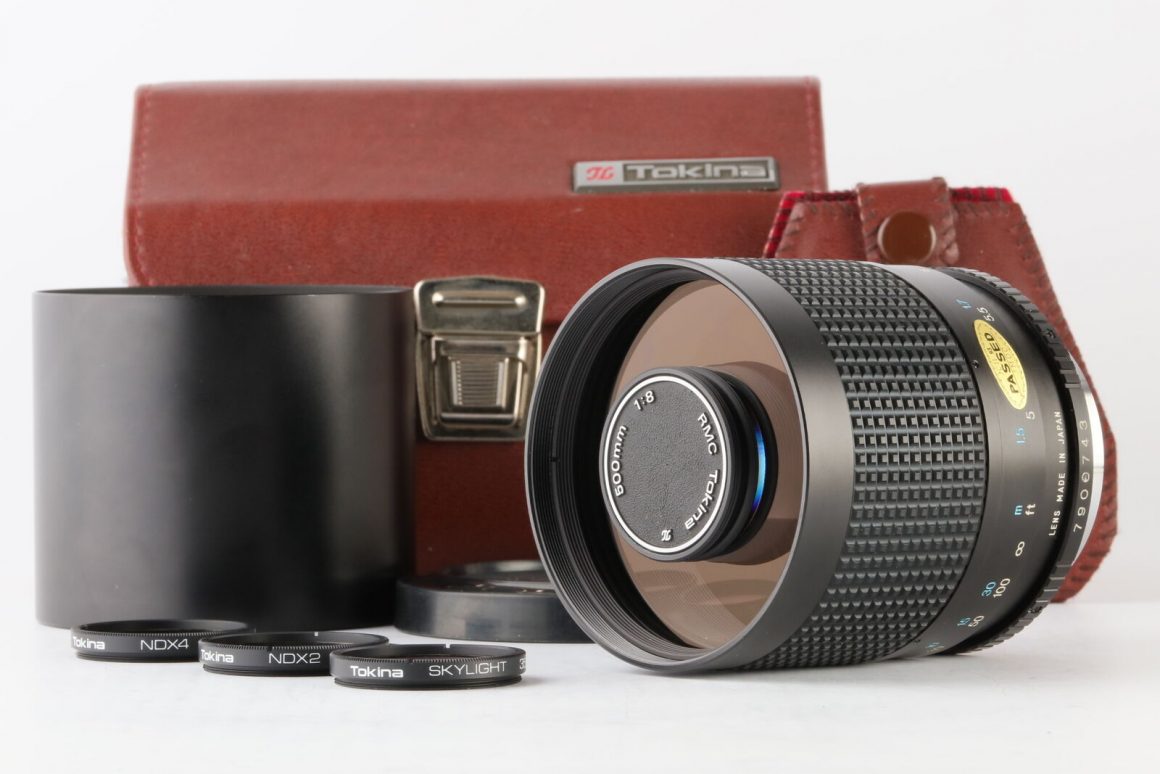
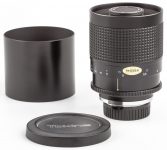
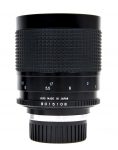
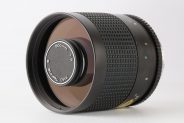
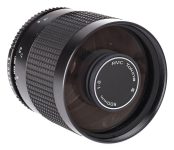
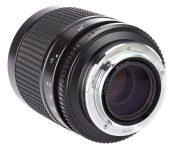
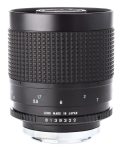
The front filter thread is not 77mm. I own three copies of this lens. The filter thread is something between 72mm and 77mm. I think it is 75mm but I am not sure because I have not found a 75mm thread and tried to screw it into the lens. But when I measure it with calipers it seems to be 75mm.
You’re right. Users say the same thing on various photographic forums:
– “I’ve seen it listed as 72mm, but it’s bigger than that. I tried a 72mm filter and it was too small, but not by much. So it’s not 72mm, but certainly not 77mm either.”
– “My Tokina 500/8 has a 75mm x 1.00 pitch thread for the metal hood on the front of the lens, which is completely non-standard for any filters (almost all filters are .75mm thread pitch). This effectively prevents the mounting of any filter directly to those threads on the lensbody.”
– “I do own this lens and its manual. Tokina DOES NOT RECOMMEND the use of front filters”
Funny thing is that on their official website Tokina states that the front filter size is 77mm. And on our website, we always fill out lens specifications based on manufacturer data. Since this was not the first case of misinformation from Tokina, once again I am convinced that the data about vintage Tokina lenses on their official website is a total mess and cannot be trusted 🙁
Thank you for pointing out this error.